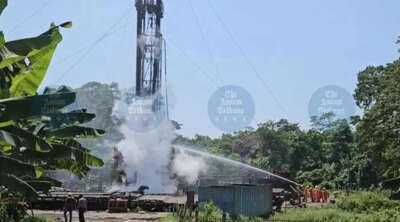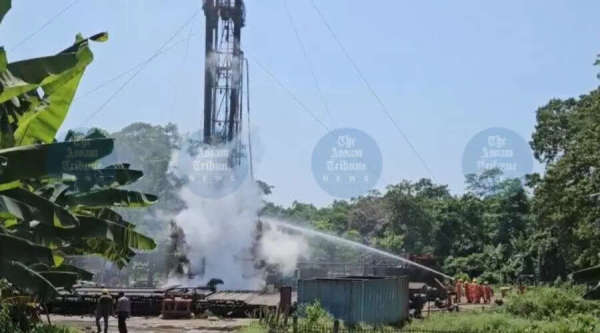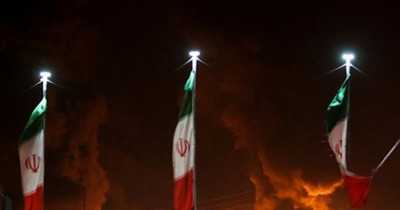
 Urgent Response to Gas Leak in Sivasagar
Urgent Response to Gas Leak in Sivasagar
Sivasagar, June 20: On Saturday, Assam's Chief Minister Himanta Biswa Sarma revealed that the initial containment strategies, Plans A and B, aimed at managing the ongoing gas leak at ONGC’s Rudrasagar Field, have not succeeded. Consequently, authorities are moving forward with Plan C, which involves permanently sealing the well.
Sarma elaborated, stating, "In the event of a gas leak, ONGC and Oil India implement a series of emergency protocols labeled A, B, C, and D."
"The first attempt involved using soil and mud to block the leak (Plan A), followed by an overhead cover method (Plan B), both of which were unsuccessful. We are now left with Plan C, which entails capping the well with a heavy plate. An expert from the US has been brought in, and the capping process is set to commence tomorrow, expected to take about 5 to 6 days."
The Chief Minister emphasized the critical nature of the situation, stating, "This gas leak is alarmingly close to the riverbank. A significant flood could escalate this into a major environmental catastrophe, which is my primary concern at this moment."
Sarma assured the public that after the capping is completed, a collaborative assessment will be conducted by the district administration and ONGC to evaluate the damage, with compensation promised for affected families.
Earlier, Union Petroleum Minister Hardeep Singh Puri provided updates via social media, stating, "I have been closely monitoring the well control operations at RDS#147A."
"A crisis management team, led by seasoned blowout control specialists, is actively engaged. Residents in proximity to the site have been relocated to relief camps, with all essential provisions such as food, shelter, and security being arranged," he added.
As a precautionary measure, water is being continuously sprayed over the well to mitigate the risk of ignition.
"The gas composition has been analyzed, revealing it to be 97% methane, which is lighter than air and disperses upwards. There are no detectable levels of hydrogen sulfide (H₂S), carbon monoxide (CO), or carbon dioxide (CO₂)," Puri stated.
"Air quality monitoring is ongoing, and readings within a 50–100 meter radius remain within safe limits," he continued.
He also mentioned that the wellhead pressure has decreased from 2600 psi to 500 psi.
"We are currently attempting a 'junk shot' operation to seal the leak, followed by the introduction of kill fluids into the well. Should these efforts fail, we are ready to proceed with the capping," Puri concluded.
-
Israel–Iran conflict escalates in second week

-
Israel–Iran conflict escalates in second week

-
Air India Pune-Delhi Flight Grounded After Bird Hit, Full Refund Offered To Passengers

-
Is Murali Vijay Dating With Australian Legend's Daughter? Viral Dinner Photo Sparks Buzz

-
Martin Zubimendi arrives in London for Arsenal deal as final Real Madrid stance confirmed
